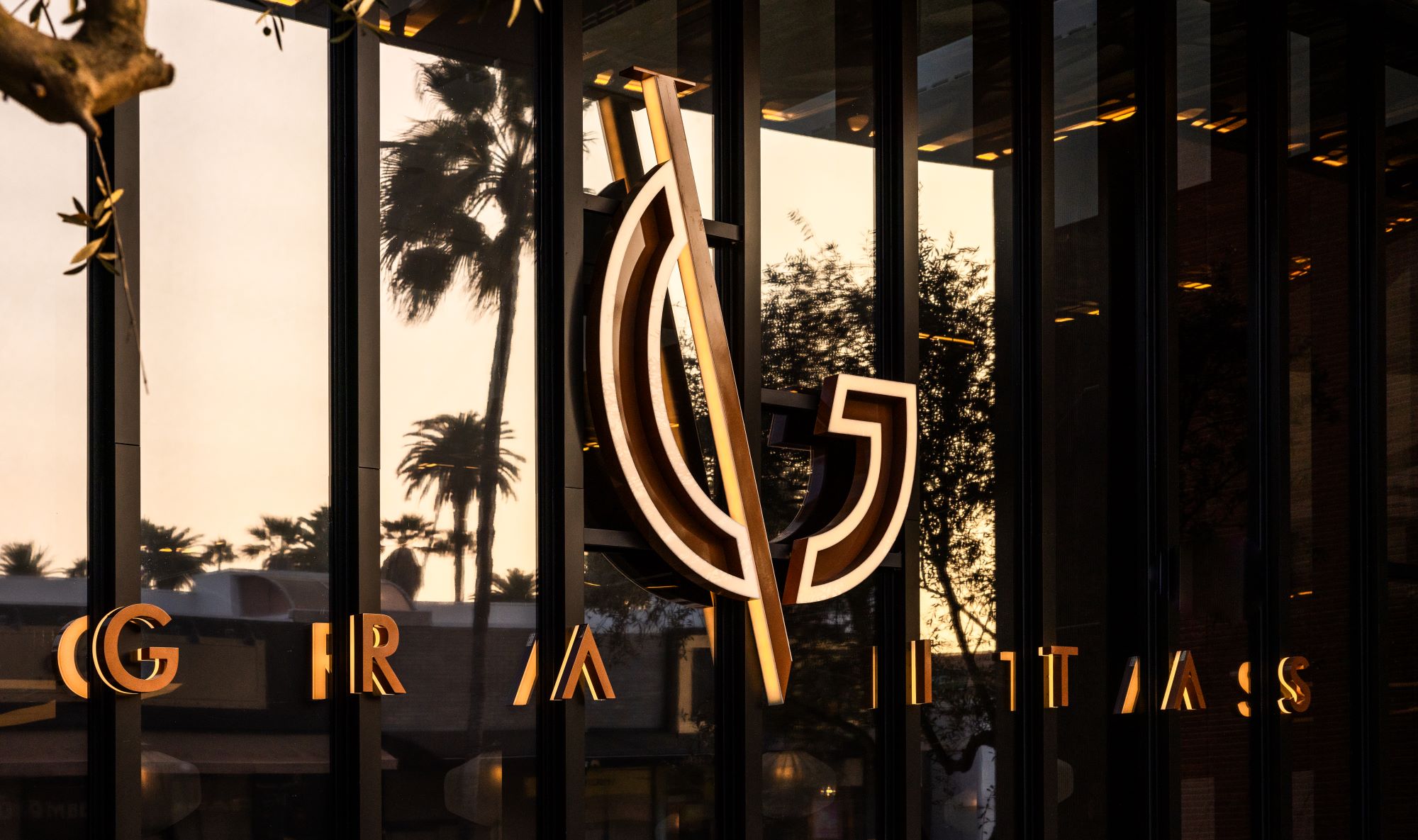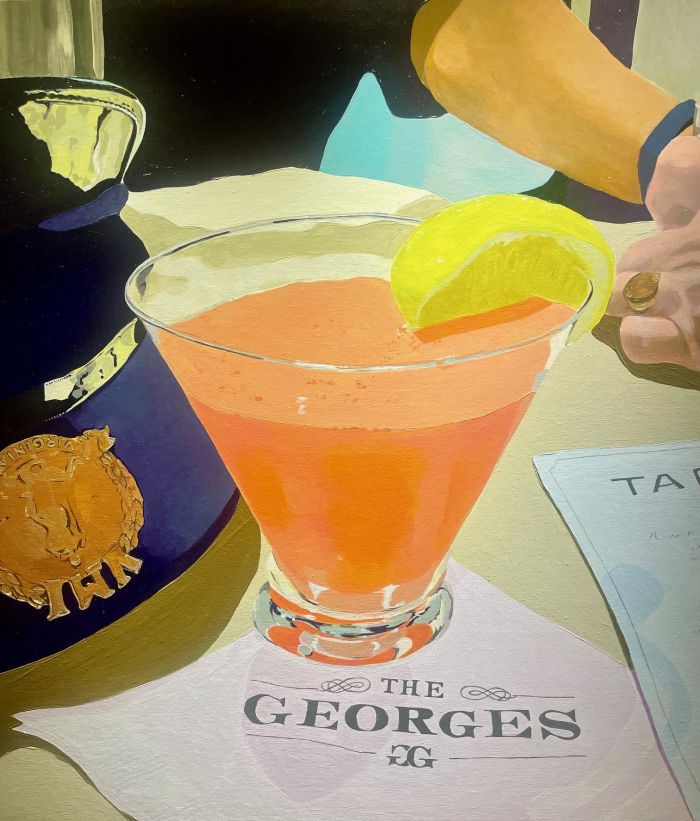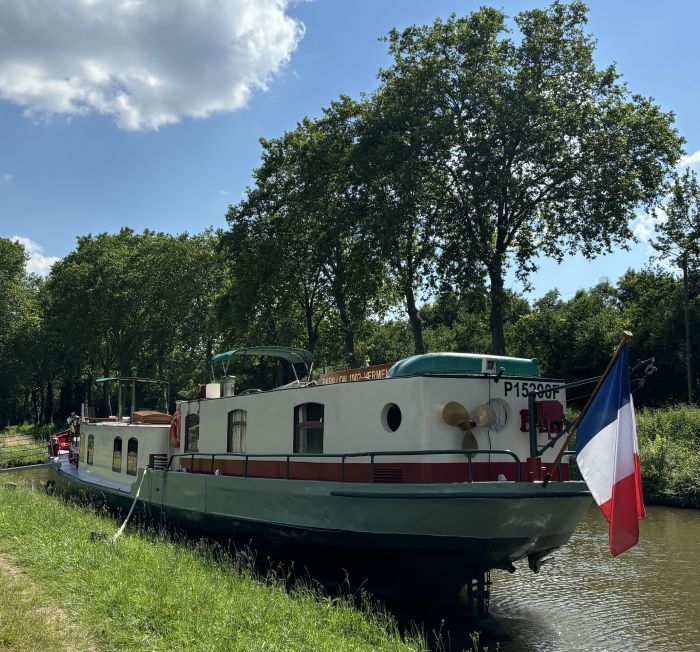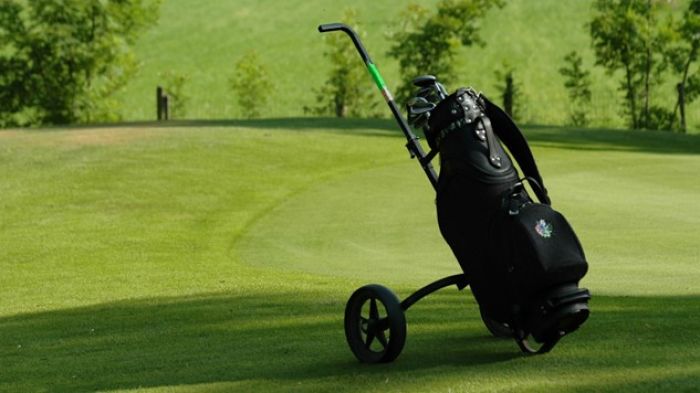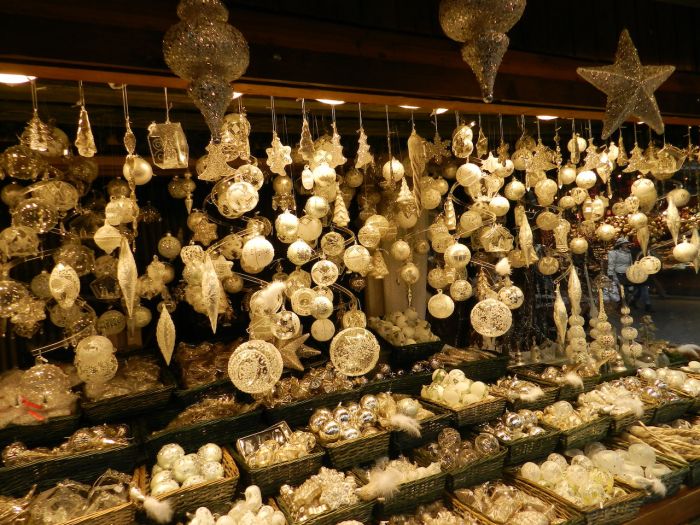
Having traveled on oceans, rivers, super highways and dusty roads, some of my favorite adventures have been on Christmas Markets river cruises. The two I have been fortunate to have experienced were the the Viking Danube and the AmaWaterways Rhine Christmas Markets cruises, both aligned with a unique traveler's education of the histories, cultures and Christmas traditions of coties and towns along these water hghways. These Christmas Markets cruises were particularly meaningful to me, as Christmas often puts me in a wistful, melancholy state that I can’t seem to shake off until the approach of New Year’s Eve.
So, when, a few years ago, Viking asked me to travel on the Christmas Markets cruise and write about it for JustLuxe, I felt it was a Godsend, and began to read about how the Christmas Market came into existence. The more I learned, the less wistful and more anticipatory I became.
The European Christmas Market, also known as Christkindlmarkt, Marché de Noël, and Weihnachtsmarkt, originated in Germany, Austria, and France. The Vienna December Market was a forerunner of the Christmas Market and dates back to 1294. This event began as a one-day 11th-century experience, in order, to ameliorate the angst of dark, cold winters, and for townspeople to buy Christmas decorations and food, allowing them to prepare for the the oncoming season. Ten centuries later, the event had expanded from one day in the 11th century into four weeks in the 21st.
During the year, hand-hewn toys, Christmas ornaments, hand-knit scarves and gloves, all made in summer are created to be sold in winter at the Christmas Markets. Preparation and planning take all year but come together during Advent, the four weeks before Christmas, and the time the Christmas markets are on full display.
We began to sail, up the Danube. Our first stop was Passau, Germany. It is a small university town dating back to the 5th century ADE; and Passau’s Christmas Market has existed for over 400 years. Passau, historically, is also the first town to have made and sold Lebküchen, or gingerbread.
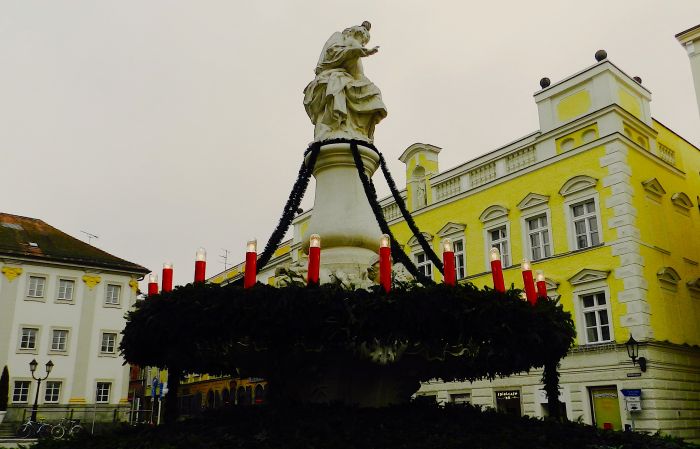
Passau’s Christmas market is on Cathedral Square in front of St. Stephen’s Cathedral, dating back to 1688. We ate Lebküchen and sipped Glüwein, a warm, cinnamon mulled red wine, and heard an organ concert playing Stille Nacht (Silent Night.) It was played on what is said to be the largest church organ in Europe. The music filled the air as snow began to fall. It was a simple experience, yet this sense of history – in the ancient town square and in songs we knew well -- was as hopeful as anything I had ever experienced, as was the scent of its native gingerbread-- strong, sweet, unforgettable.
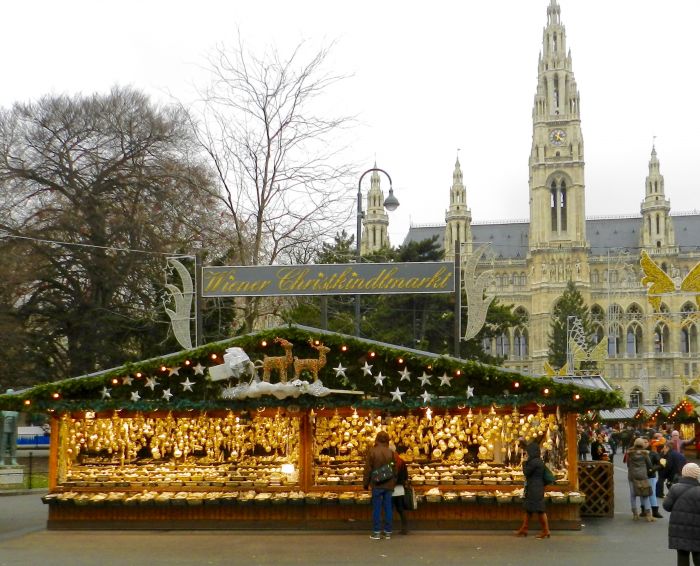
In direct contrast to modest Passau was the grand Vienna Christmas Market, or I should say Markets, as Vienna now has 20 Christmas Market areas. Yet the one at the Rathaus, or City Hall, is the oldest in Central Europe. Nearby, the market stalls sell aromatics, Viennese chocolate, Christmas décor, dried herbs, red and white Glüwein, and sparkling Mylar balloons, all reflecting holiday lights and urban spirit of the season.
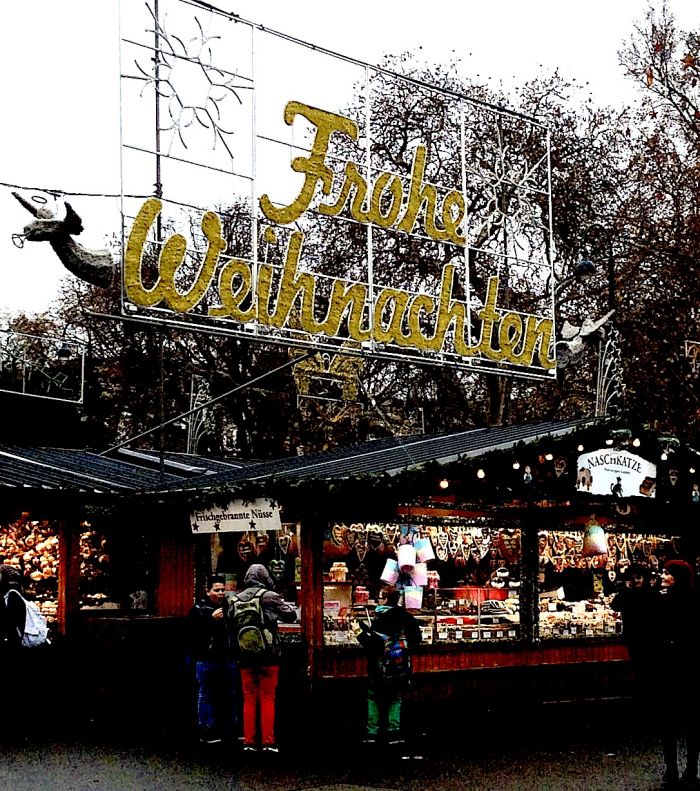
Another Christmas Markets fascination is in Salzburg, the birthplace of Mozart. This town is at the foot of the Hohensalzburg Fortress and around the Cathedral of Salzburg. At the Salzberg Christmas Market, there is daily choral singing in front of the cathedral, and the sound of "Turmblasen" (wind instruments) is heard daily also on Residenz Square. There is a kind of romance of the Salzburg market, and much of it is sensory: toasted almonds, chestnuts, gingerbread all mingle here, to make the Salzburg Christmas Market more of a medieval fairy tale than anything else.
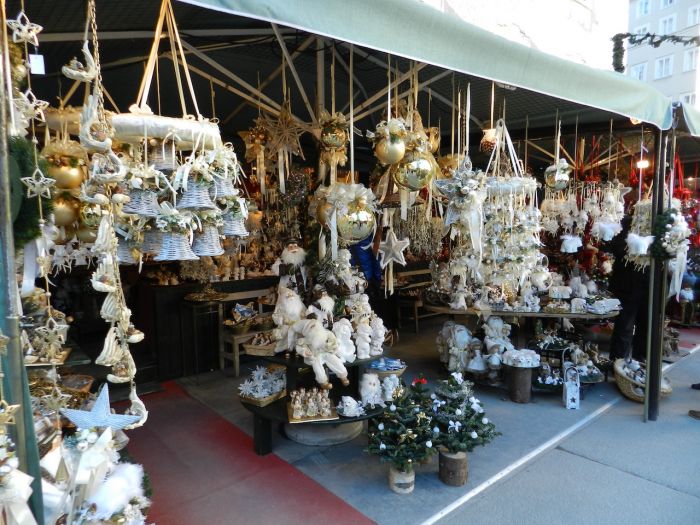
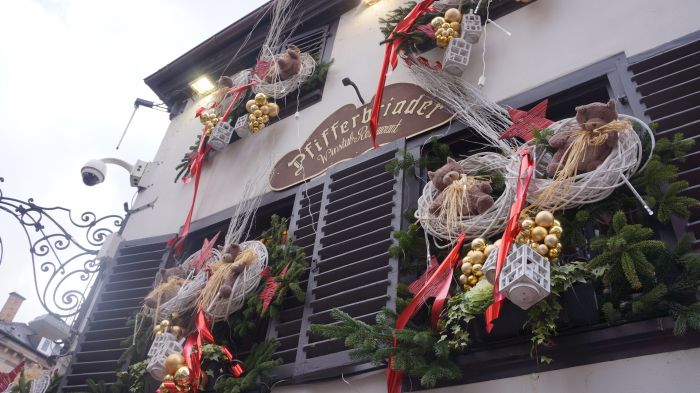
A year after my Danube travels, AmaWaterways were kind enough to allow me to travel on their Christmas Markets cruise, up the Rhine. This is a very different river from the Danube: I have heard Europeans differentiate the rivers this way: Mother Danube, Father Rhine. The Rhine, they say, is more of a working waterway than the Danube. Is this true? It seems there were more barges and cargo boats than I remember on the Danube, but there are also Castles on the Rhine, so I am no judge of river personalities.
On the AmaWaterways Rhine Christmas Markets cruise, we also sailed to different areas, where Christmas Markets defined different cultures. The Alsace region is a compelling example, as I was astonished by the bi-cultural Christmas market at the medieval village of Riquewihr. This is a bi-cultural area, due to all the quick succession of monarchies. For hundreds of years, the French ruled, then the German, then French, the German. One gustatory consequence is the unique dual French/German food combinations found in the Christmas Market. At one of the market stalls was the scent of a buttery sautéed French foie gras, a warm paté made of goose liver, wine-paired not with the usual French white Bordeaux, but with a sweet German late-harvest white Gewürtztraminer.
Another city visited on the AmaWaterways Christmas Markets Rhine cruise was Strasbourg, France. It is called the Capital of Christmas because it was here in 1570 that the first true French Christmas Market took place. Now, over 300 vendor stalls are spread over ten Strasbourg city locations, making Strasbourg one of the largest Christmas markets in France and Europe. We saw not only Christmas Market décor all over the city, but also colorful décor on the simplest of homes.
Also, along the Rhine, was the renowned Christmas Market of Cologne, Germany, Cologne has the magnificent, 771 year old cathedral, whose long shadows touch the many markets in the area. It was there we drank a little more Gluwein, bought many types of European licorice, and anise flavored gingerbread cookies. We entered the Cathedral late in the day, and noted the scent of candles and evergreen – the scent of Christmas past and present—inundated the spiritual spaces.
The Christmas Markets, whether they be in villages or cities, share a certain optimism that Advent provides: it also depicts how old traditions evolve into contemporary ones – 13th century hymns are still sung, candles still burn, and life, with its ups and downs, still pauses and with hope, learn again as to how the Christmas past still informs the Christmas present.
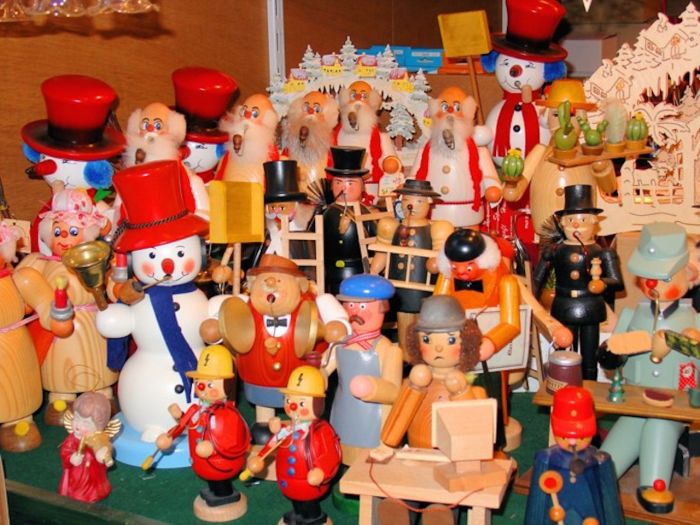
Salzburg Christmas Markets, hand-hewn wooden toys
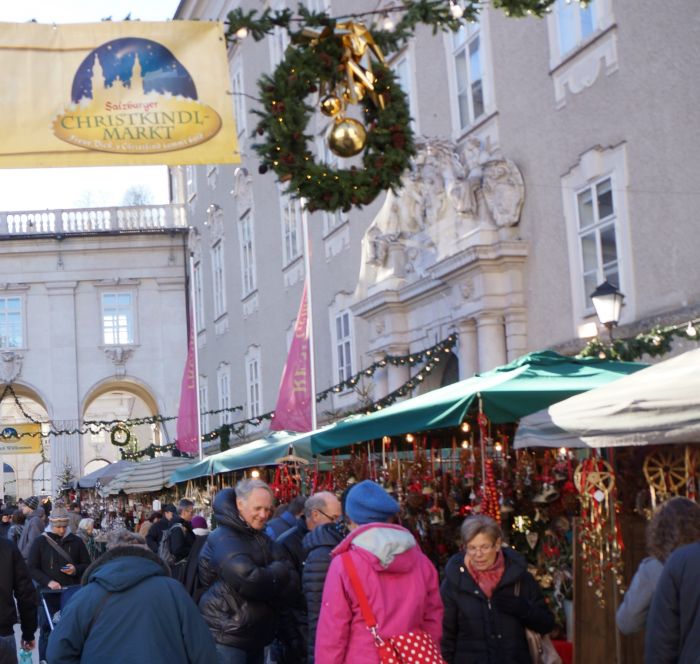
Busy Sunday at the Salzburg Christmas Market











